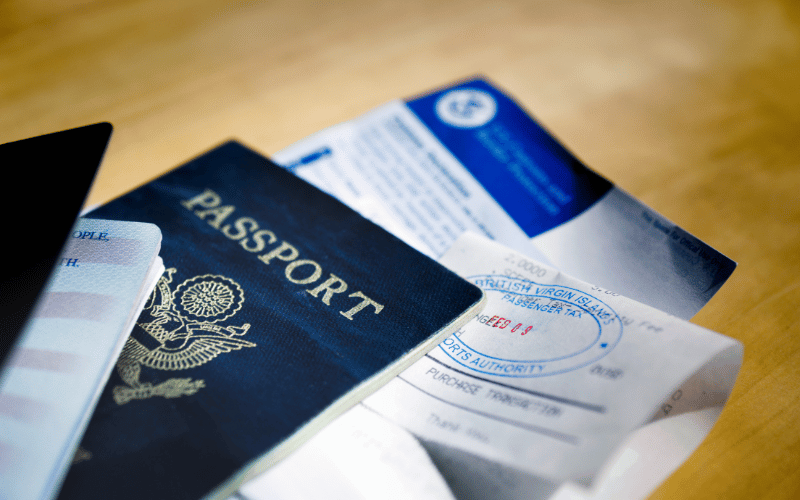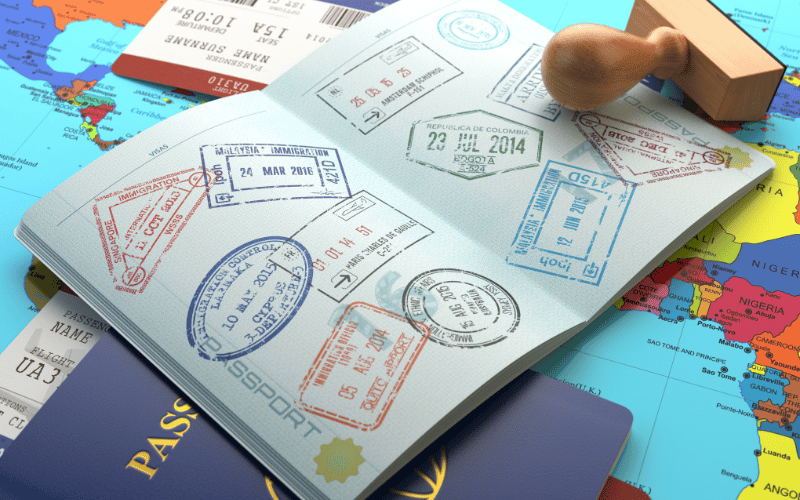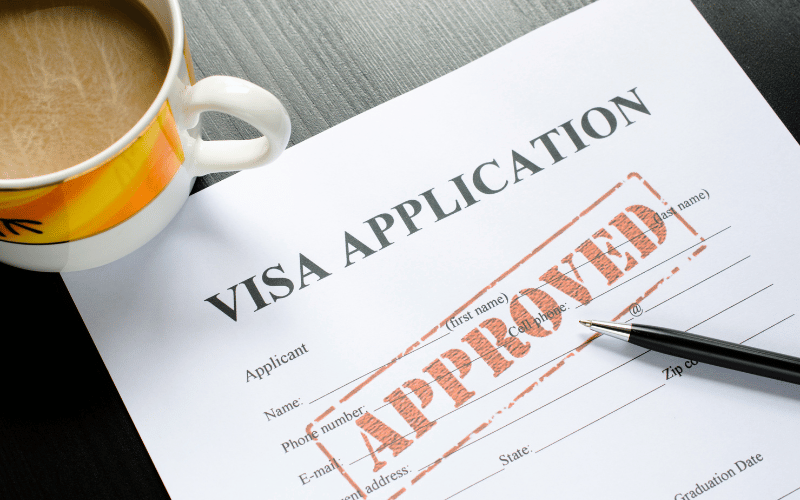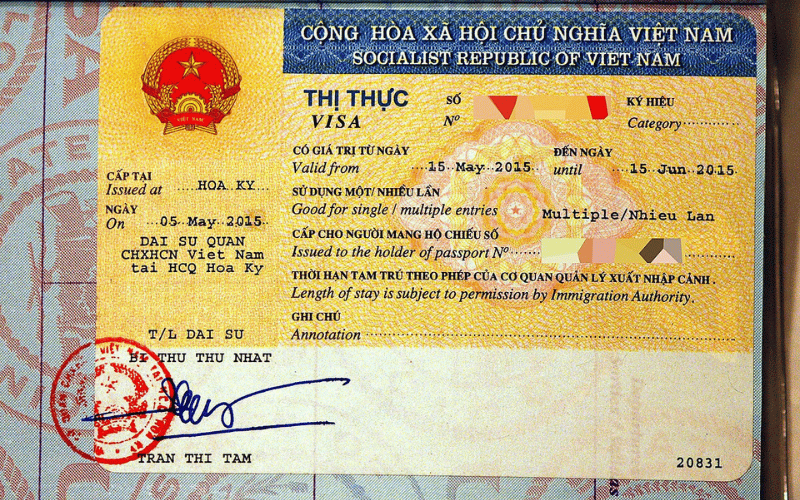When applying for a visa, especially for countries with strict financial proof requirements, one of the most common documents requested is a savings book (passbook). Many embassies use the savings book as proof of financial capability, ensuring that applicants can cover expenses during their stay abroad and will not become a financial burden.
But how exactly do you make a savings book for visa purposes? Are there risks? How do you ensure your savings book is credible and meets embassy requirements?
This article provides the most comprehensive, easy-to-follow guide to creating a savings book for visa applications in 2025, along with expert insights from VISA 3S—a leading visa service provider trusted by thousands of customers across Vietnam and beyond.
Why Do You Need a Savings Book for Visa Applications?

Embassies request savings books for several reasons:
-
To ensure applicants have sufficient financial resources to fund their trip.
-
To minimize the risk of applicants overstaying or working illegally.
-
To prove stable income and financial ties to the home country.
For tourist, student, or business visas, embassies often set specific minimum savings requirements, ranging from $5,000 to $20,000, depending on the destination country and duration of stay.
Having a savings book demonstrates:
- Financial readiness
- Economic stability
- Genuine travel intentions
However, many applicants face difficulties in preparing acceptable financial proof, leading to visa rejection or application delays.
Watch more: What is the difference between a visa and a passport?
Common Mistakes When Making a Savings Book for Visa Applications
If you’re preparing your visa documents, be careful with the following common mistakes:

1. Making a Savings Book Too Late
Many embassies require the savings book to be active for at least 1 to 3 months before applying. Creating it just days before submission may lead to suspicion or outright rejection.
2. Insufficient Balance
Each country has different minimum balance requirements. For example:
-
Schengen Visa: Minimum €5,000 to €10,000
-
Canada Visitor Visa: Minimum CAD $15,000 to $25,000
-
Australia Tourist Visa: Minimum AUD $10,000+
Creating a savings book with an amount below these thresholds reduces your approval chances.
3. Using “Unrealistic” or “Fabricated” Savings Books
Some people resort to unreliable agents for fake savings books. This is illegal and extremely risky. Embassies are increasingly verifying financial documents directly with banks.
4. Wrong Bank Selection
Not all banks are recognized or trusted by embassies. Using savings books from lesser-known banks can affect the credibility of your financial proof.
Watch more: Latest visa price list for foreigners 2025
Step-by-Step Guide to Making a Savings Book for Visa in 2025
If you want to ensure your savings book meets embassy standards, follow this simple yet effective procedure:

Step 1: Research Embassy Requirements
Before making a savings book, consult:
-
Official embassy websites
-
Recent successful visa applicants
-
Reputable visa service providers like VISA 3S
Focus on:
- Minimum balance required
Minimum duration the savings book must be active
Accepted bank list
Step 2: Choose a Reputable Bank
Select major, internationally recognized banks, such as:
-
Vietcombank
-
BIDV
-
Techcombank
-
ACB
-
MB Bank
Using trusted banks enhances your financial profile’s credibility.
Note: Some embassies prefer savings books with English translations. VISA 3S can assist with this to avoid errors.
Step 3: Open a Savings Book
You can open:
-
Fixed-term savings books (1, 3, or 6 months)
-
Passbooks with a large balance deposited upfront
Key points:
-
Deposit the required amount in full
-
Keep transaction slips and confirmation documents
-
Request English versions of all financial documents
Step 4: Timing is Crucial
Ideally:
-
Open your savings book at least 3 months before submitting your visa application
-
Avoid last-minute deposits that may appear suspicious
-
Maintain stable financial history in your bank account
How Much Should You Deposit in Your Savings Book?
The amount depends on:
| Country/Region | Recommended Savings Balance |
|---|---|
| Schengen Area | €5,000 – €10,000 |
| United States | $10,000 – $20,000 |
| Canada | CAD $15,000 – $25,000 |
| Australia | AUD $10,000 – $20,000 |
| Japan/Korea | $10,000 – $20,000 |
The more substantial your savings, the better your chances. However, ensure the amount aligns with your travel purpose, itinerary, and overall visa profile.
Should You Use a Financial Guarantee Service?
For applicants lacking sufficient funds or needing fast solutions, some turn to financial guarantee services. However:
⚠️ Many unlicensed agents offer fraudulent savings books
⚠️ Using fake documents can lead to visa bans or legal trouble
⚠️ Embassy verification systems are becoming stricter
To stay safe:
✅ Only work with reputable, legally compliant services
✅ Ensure transparency and authenticity of all documents
✅ Consider consulting trusted agencies like VISA 3S
Why Choose VISA 3S for Visa and Financial Document Support?
VISA 3S is a top-rated visa service in Vietnam, helping thousands of clients successfully apply for visas to:
-
Europe
-
The US
-
Canada
-
Australia
-
Japan, Korea, and more
What Sets VISA 3S Apart:
✔️ Transparent, Legal Financial Solutions
VISA 3S collaborates with major banks to assist clients in opening valid savings books that fully comply with embassy standards.
✔️ Super-Fast Processing
Need urgent visa or financial document preparation? VISA 3S offers express services with savings book setups and visa applications processed in as little as 4 hours, even on weekends.
✔️ Trusted by Thousands
With a proven track record, VISA 3S has helped thousands of individuals and businesses secure visas, with high approval rates and zero legal risks.
✔️ Comprehensive Document Support
From savings books to bank statements, income proofs, and translations, VISA 3S ensures your visa application is bulletproof.
Additional Tips to Strengthen Your Visa Application
Besides a savings book, embassies may require:
-
Employment confirmation letters
-
Business registration certificates (for business owners)
-
Income tax statements
-
Property ownership documents
-
Travel insurance
-
Flight and hotel reservations
VISA 3S provides full document consultation, ensuring your profile meets all embassy expectations.
Frequently Asked Questions
1. Can I make a savings book with borrowed money?
Technically yes, but embassies check transaction history. Sudden large deposits without logical explanations may raise red flags.
2. Are savings books from digital banks acceptable?
It depends on embassy preferences. Major, traditional banks are safer. VISA 3S can advise on embassy-specific bank lists.
3. How long should my savings book be active?
Ideally 3 months before application. Some embassies accept newer savings books, but older, stable financial records carry more weight.
4. Is it risky to use fake savings books?
Absolutely. Many have been caught and banned from applying for visas for years. Always use genuine documents.
Simplify Your Visa Process with VISA 3S
Creating a savings book for your visa application doesn’t have to be stressful or risky. By following proper procedures and working with experts like VISA 3S, you can:
✅ Save time and avoid legal issues
✅ Ensure your financial documents meet embassy standards
✅ Increase your visa approval chances
In 2025, as embassies tighten requirements, trusted, transparent services are more vital than ever.
Contact VISA 3S today for free consultation and experience a safe, efficient visa process!
VISA 3S VIETNAM – Your Trusted Partner for Global Travel
☎ Hotline: 058 236 6333
🌐 www.visa3s.vn
📩 Facebook: Visa 3S
Easy come, easy go – Apply for your visa the smart way with VISA 3S.



